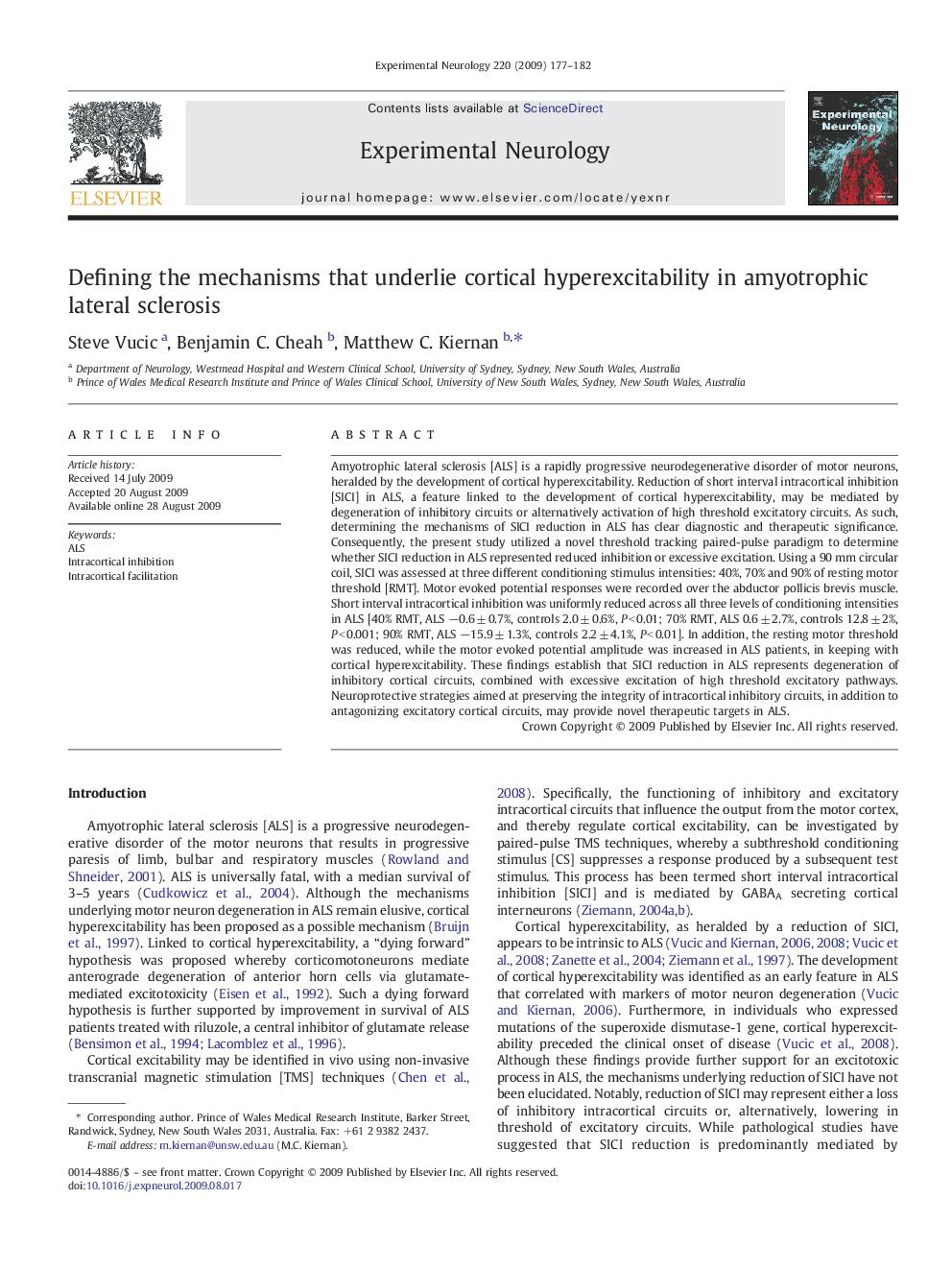| Article ID | Journal | Published Year | Pages | File Type |
|---|---|---|---|---|
| 3056204 | Experimental Neurology | 2009 | 6 Pages |
Amyotrophic lateral sclerosis [ALS] is a rapidly progressive neurodegenerative disorder of motor neurons, heralded by the development of cortical hyperexcitability. Reduction of short interval intracortical inhibition [SICI] in ALS, a feature linked to the development of cortical hyperexcitability, may be mediated by degeneration of inhibitory circuits or alternatively activation of high threshold excitatory circuits. As such, determining the mechanisms of SICI reduction in ALS has clear diagnostic and therapeutic significance. Consequently, the present study utilized a novel threshold tracking paired-pulse paradigm to determine whether SICI reduction in ALS represented reduced inhibition or excessive excitation. Using a 90 mm circular coil, SICI was assessed at three different conditioning stimulus intensities: 40%, 70% and 90% of resting motor threshold [RMT]. Motor evoked potential responses were recorded over the abductor pollicis brevis muscle. Short interval intracortical inhibition was uniformly reduced across all three levels of conditioning intensities in ALS [40% RMT, ALS −0.6 ± 0.7%, controls 2.0 ± 0.6%, P < 0.01; 70% RMT, ALS 0.6 ± 2.7%, controls 12.8 ± 2%, P < 0.001; 90% RMT, ALS −15.9 ± 1.3%, controls 2.2 ± 4.1%, P < 0.01]. In addition, the resting motor threshold was reduced, while the motor evoked potential amplitude was increased in ALS patients, in keeping with cortical hyperexcitability. These findings establish that SICI reduction in ALS represents degeneration of inhibitory cortical circuits, combined with excessive excitation of high threshold excitatory pathways. Neuroprotective strategies aimed at preserving the integrity of intracortical inhibitory circuits, in addition to antagonizing excitatory cortical circuits, may provide novel therapeutic targets in ALS.
